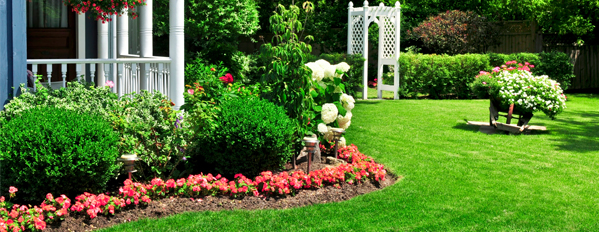Prepare Your Lawn for the Summer Heat
 Everyone wants a beautiful lawn, but the secret to having a thriving landscape through the heat of summer lies in the lawn care techniques you implement before the heat sets in. By applying a systematic approach, you’ll develop a resilient lawn that’s resistant to the effects of the sun, weeds, pests and heavy foot traffic.
Everyone wants a beautiful lawn, but the secret to having a thriving landscape through the heat of summer lies in the lawn care techniques you implement before the heat sets in. By applying a systematic approach, you’ll develop a resilient lawn that’s resistant to the effects of the sun, weeds, pests and heavy foot traffic.
Massey Services offers the following tips to help keep your grass green and prepare your lawn for the summer heat:
- Water your grass at the first signs of wilt, but abide by local water regulations. Run the system long enough to apply 1/2 to 3/4ths of an inch. Spot watering of localized dry spots may be necessary. No irrigation system is perfect and areas where the root system is shorter will need water more frequently.
- Follow label directions carefully whether treating your lawn with fertilizer or for insects, diseases or weeds.
- Test your soil pH. The pH of your soil determines how well fertilizers will benefit your lawn.
- Micro-nutrients, such as iron and manganese, will not be available to the plant when the soil pH is too high. Nitrogen, phosphorus and potassium are not readily available when the soil pH is too low. Amend the soil pH as needed.
- Aeration is very beneficial to your lawn, even in Florida’s sandy soils. Aeration allows water and oxygen to better penetrate thatch and soil to reach the root system. It also benefits our environment by helping to prevent nutrient runoff.
- Mow your lawn at the highest recommended height for your grass type. Different types of turf have different recommendations for mowing height. Standard varieties of St. Augustine should be mowed at 3.5 to 4 inches. Seville is a dwarf variety of St. Augustine and should be mowed at 3 inches. Empire Zoysia should be mowed at 2.5 inches. Bahiagrass should be mowed at 4 inches.
- Mowing should be performed whenever the grass reaches a height that is 1/3rd higher than the recommended height of cut.
- Sharpen mower blades frequently for a nice clean cut without ragged edges, which give the lawn an overall gray appearance.
- Scout for insects such as chinch bugs, sod webworms and other lawn caterpillars as well as mole crickets. Look closely just above the soil surface for chinch bugs and lawn caterpillars.
- Pouring soapy water over an area suspected of insects will irritate the insects and cause them to come to the surface where they can be seen.
Knowing what to look for is half the battle when it comes to keeping your lawn in great shape. Check your lawn on a regular basis to catch problems early and prevent excessive damage and the potential need to resod.
If you’re looking for expert care for your landscape, contact us for a free inspection. We’ll perform a complete, thorough inspection of your lawn and landscape and develop a customized landscape program specific to your lawn.
Further reading: